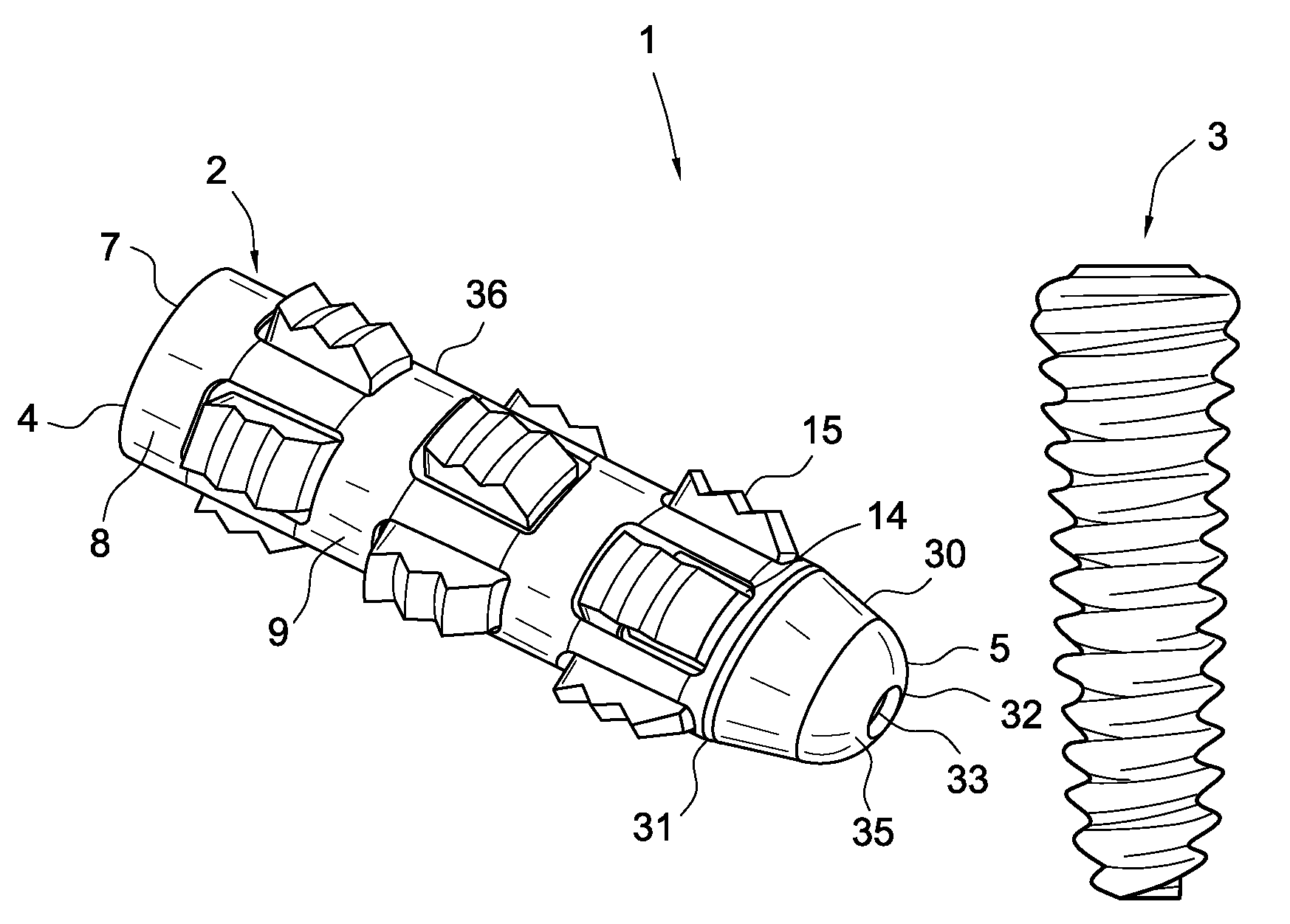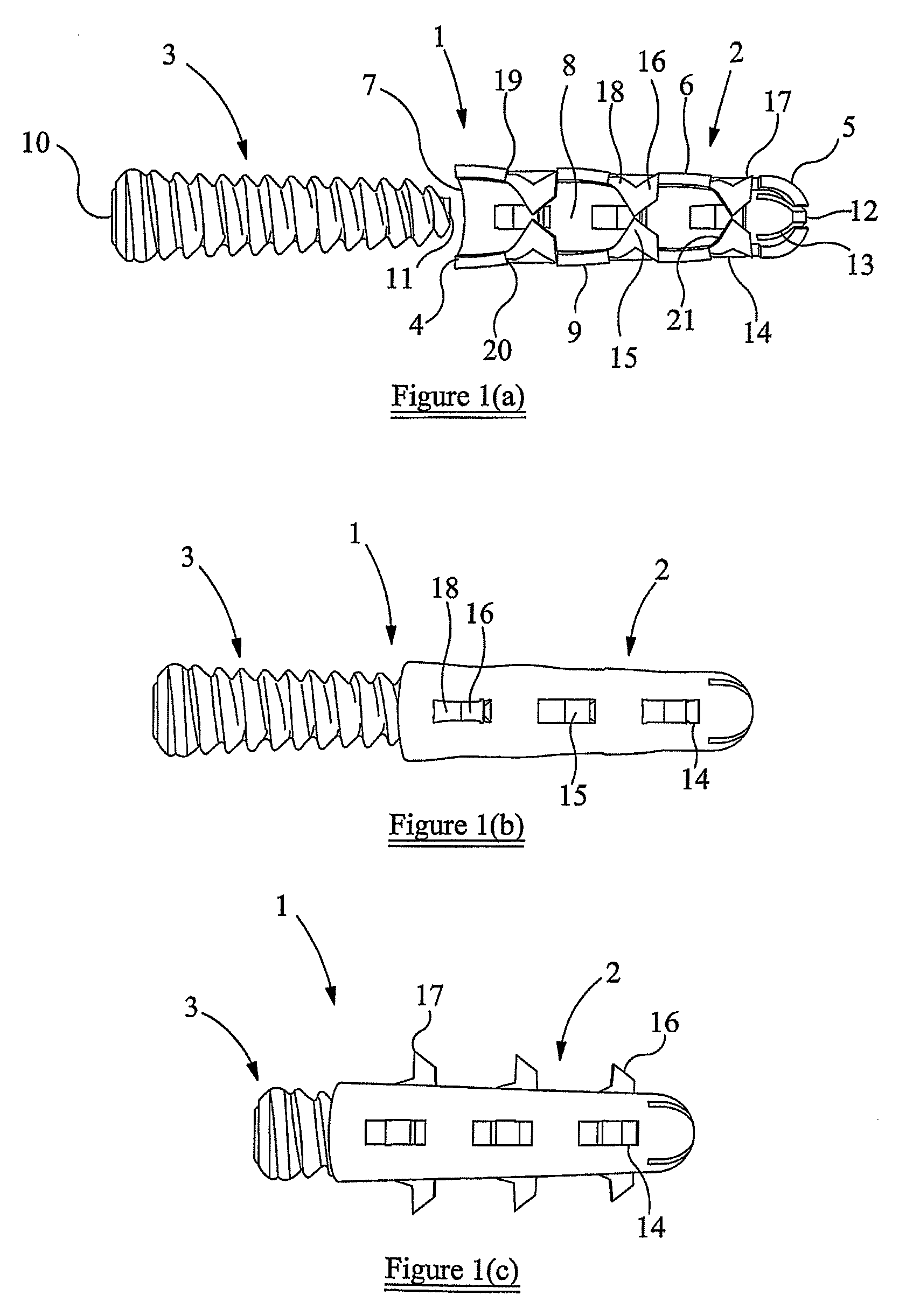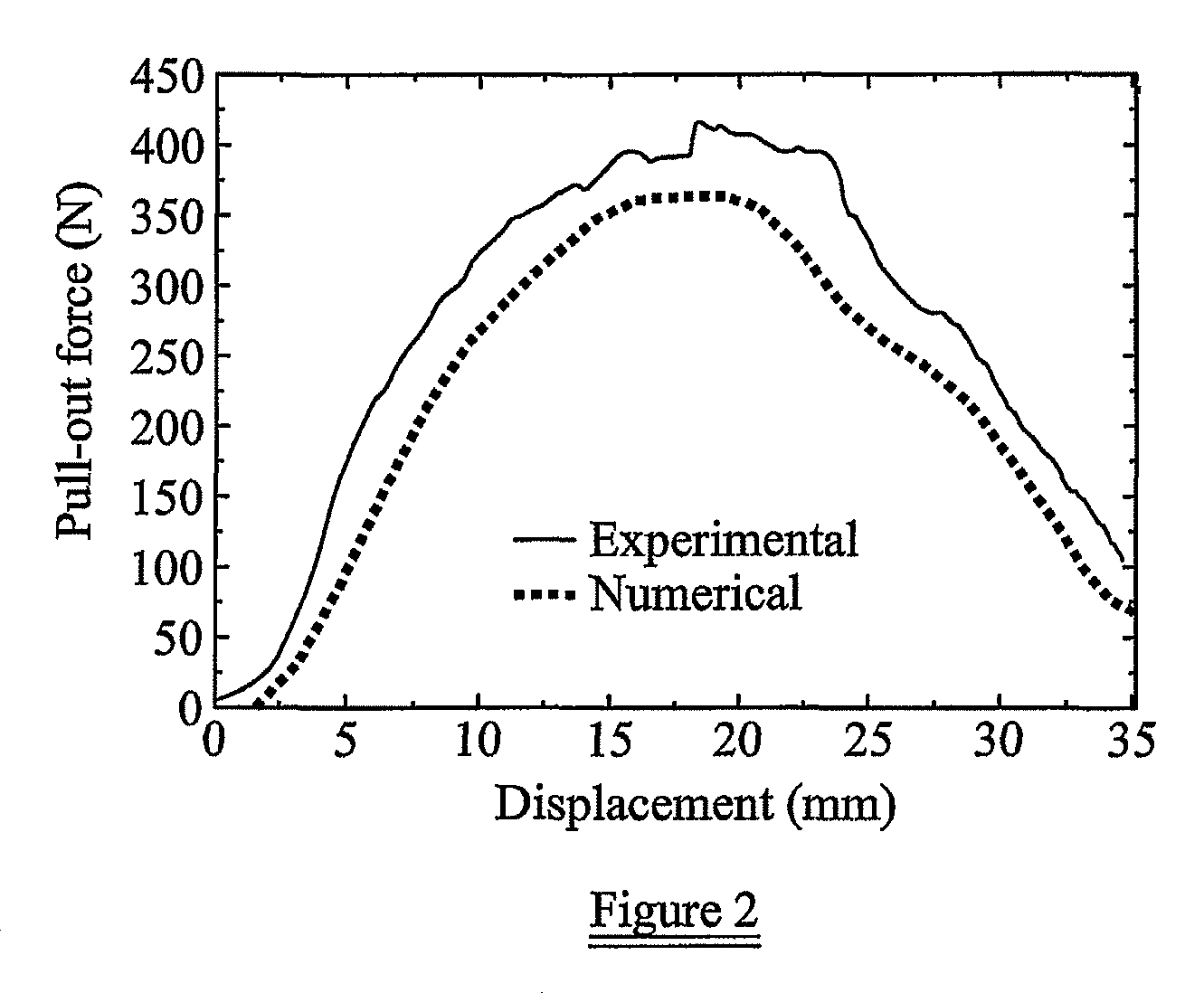Graft fixation device
a technology for fixing devices and knees, applied in the field of graft fixation devices, can solve problems such as excessive and/or uncontrolled motion about a particular joint, damage to connective soft tissue, and sometimes exceeding the limits of the demands placed on the kn
- Summary
- Abstract
- Description
- Claims
- Application Information
AI Technical Summary
Benefits of technology
Problems solved by technology
Method used
Image
Examples
examples
[0089]Experimental studies on animal models and computer simulations were carried out in the context of an ACL reconstruction. The experimental tests provided basic material data which was needed to understand the failure modes of ACL reconstruction, as well as to provide information needed for modeling and verification of the simulation. The computer modeling provided technical information which could not have been obtained as easily via pure experimental investigation, such as stress distributions, interfacial loading between the ligament graft, sheath / screw and bones, and first point of failure. The simulation also provided a means to allow various parameters to be tested so as to optimize the design of the fixation device of the present invention without requiring extensive experimental investigation. Experimental tests were then carried out to determine the performance of an nonoptimized prototype device according to the present invention for comparison to a commercially availa...
PUM
 Login to View More
Login to View More Abstract
Description
Claims
Application Information
 Login to View More
Login to View More - R&D
- Intellectual Property
- Life Sciences
- Materials
- Tech Scout
- Unparalleled Data Quality
- Higher Quality Content
- 60% Fewer Hallucinations
Browse by: Latest US Patents, China's latest patents, Technical Efficacy Thesaurus, Application Domain, Technology Topic, Popular Technical Reports.
© 2025 PatSnap. All rights reserved.Legal|Privacy policy|Modern Slavery Act Transparency Statement|Sitemap|About US| Contact US: help@patsnap.com



